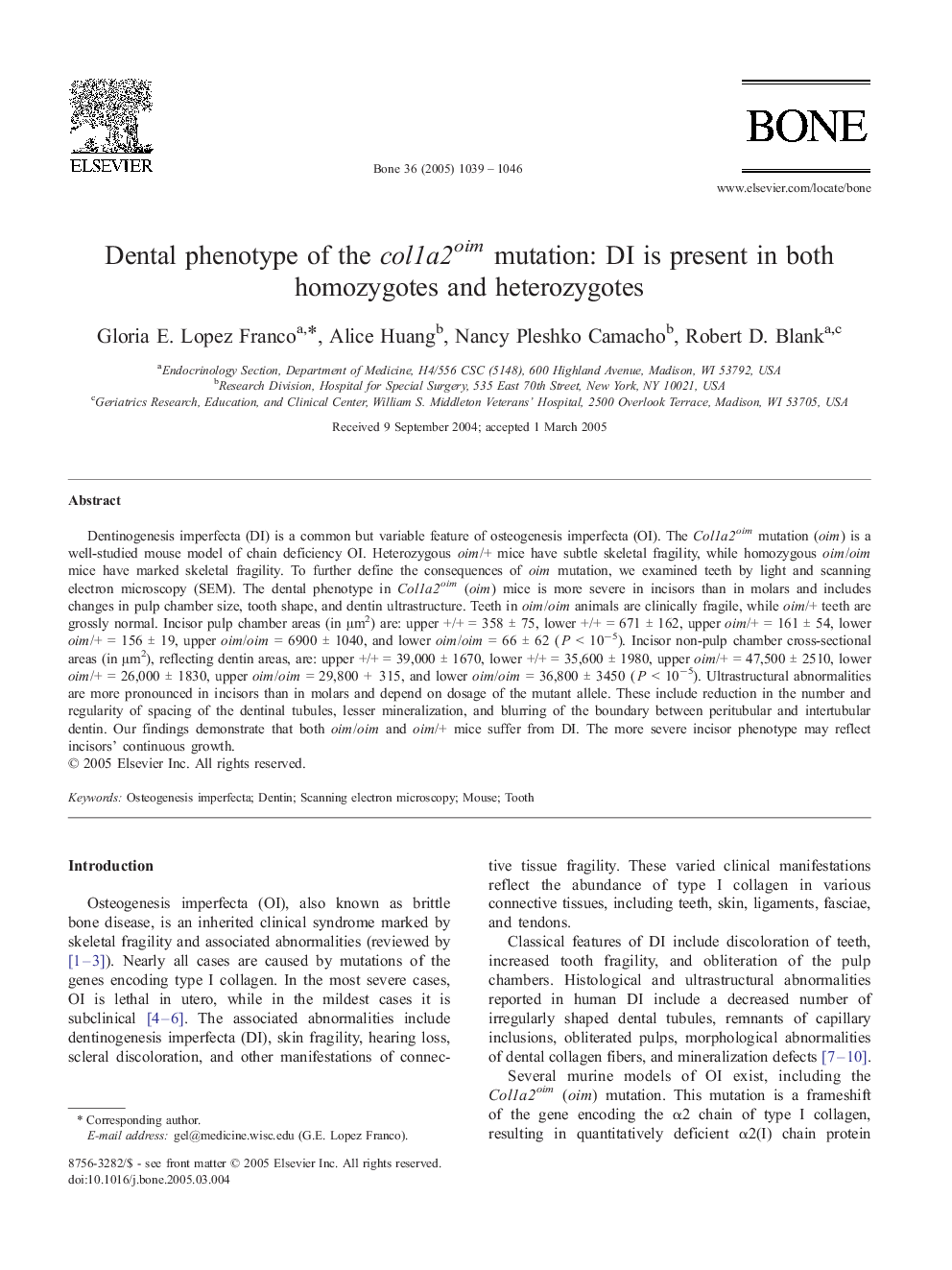| Article ID | Journal | Published Year | Pages | File Type |
|---|---|---|---|---|
| 9104922 | Bone | 2005 | 8 Pages |
Abstract
Dentinogenesis imperfecta (DI) is a common but variable feature of osteogenesis imperfecta (OI). The Col1a2oim mutation (oim) is a well-studied mouse model of chain deficiency OI. Heterozygous oim/+ mice have subtle skeletal fragility, while homozygous oim/oim mice have marked skeletal fragility. To further define the consequences of oim mutation, we examined teeth by light and scanning electron microscopy (SEM). The dental phenotype in Col1a2oim (oim) mice is more severe in incisors than in molars and includes changes in pulp chamber size, tooth shape, and dentin ultrastructure. Teeth in oim/oim animals are clinically fragile, while oim/+ teeth are grossly normal. Incisor pulp chamber areas (in μm2) are: upper +/+ = 358 ± 75, lower +/+ = 671 ± 162, upper oim/+ = 161 ± 54, lower oim/+ = 156 ± 19, upper oim/oim = 6900 ± 1040, and lower oim/oim = 66 ± 62 (P < 10â5). Incisor non-pulp chamber cross-sectional areas (in μm2), reflecting dentin areas, are: upper +/+ = 39,000 ± 1670, lower +/+ = 35,600 ± 1980, upper oim/+ = 47,500 ± 2510, lower oim/+ = 26,000 ± 1830, upper oim/oim = 29,800 + 315, and lower oim/oim = 36,800 ± 3450 (P < 10â5). Ultrastructural abnormalities are more pronounced in incisors than in molars and depend on dosage of the mutant allele. These include reduction in the number and regularity of spacing of the dentinal tubules, lesser mineralization, and blurring of the boundary between peritubular and intertubular dentin. Our findings demonstrate that both oim/oim and oim/+ mice suffer from DI. The more severe incisor phenotype may reflect incisors' continuous growth.
Related Topics
Life Sciences
Biochemistry, Genetics and Molecular Biology
Developmental Biology
Authors
Gloria E. Lopez Franco, Alice Huang, Nancy Pleshko Camacho, Robert D. Blank,
